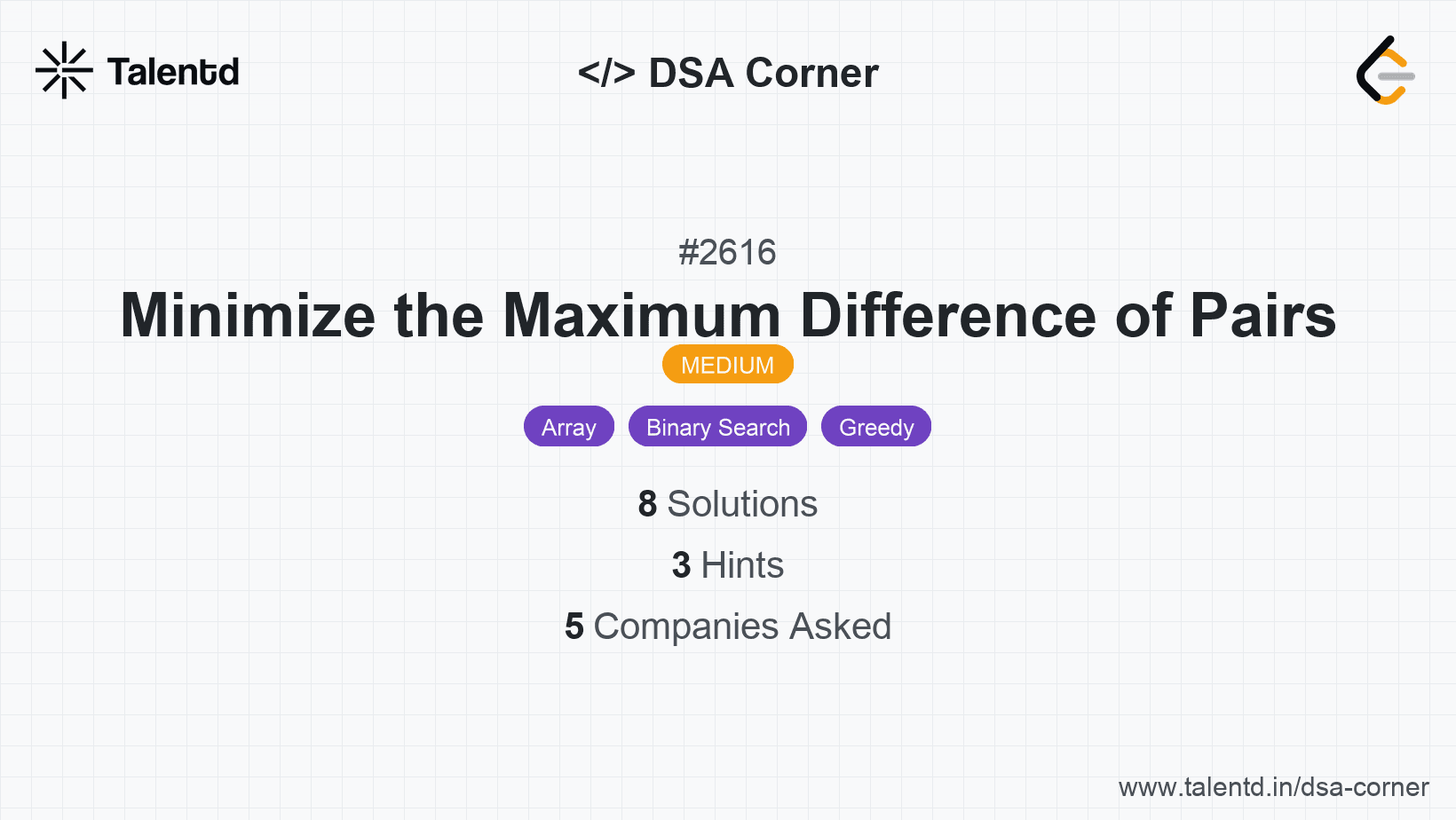
Sponsored
Sponsored
The primary idea of this approach is to first sort the array so that elements which are closer in value are positioned adjacent to each other. This can help in reducing the maximum difference within selected pairs when paired greedily. Once sorted, the greedy approach looks to form pairs consecutively and calculate the differences. By doing so repetitively and minimizing the maximum difference, an optimal solution is achieved.
Time Complexity: O(n log n), dominated by the sorting step.
Space Complexity: O(1), if we ignore the space used by the sorting algorithm.
1def minimize_max_difference(nums, p):
2 nums.sort()
3 left, right = 0, nums[-1] - nums[0]
4 while left < right:
5 mid = (left + right) // 2
6 count, i = 0, 1
7 while i < len(nums) and count < p:
8 if nums[i] - nums[i - 1] <= mid:
9 count += 1
10 i += 1 # Skip the next index
11 i += 1
12 if count >= p:
13 right = mid
14 else:
15 left = mid + 1
16 return left
17
18nums = [10, 1, 2, 7, 1, 3]
19p = 2
20print(minimize_max_difference(nums, p))This Python solution uses the sort method to order the elements in the list before using a binary search through the differences to count how many valid pairs can be formed.
This approach also begins by sorting the input array, but tackles the problem by employing a min-heap (priority queue). The idea is to manage the smallest differences available and decide pairs greedily based on this. The heap helps efficiently remove and manage differences, ensuring that the maximum difference in the formed pairs remains minimal.
Time Complexity: O(n log n) due to the heap operations.
Space Complexity: O(n) for holding the differences.
1from heapq import heappush, heappop
2
3
In this Python code, we sort the array and then push all possible adjacent differences into a min-heap. We then pop the smallest difference and form pairs while keeping track of used elements until the required number of pairs is formed.